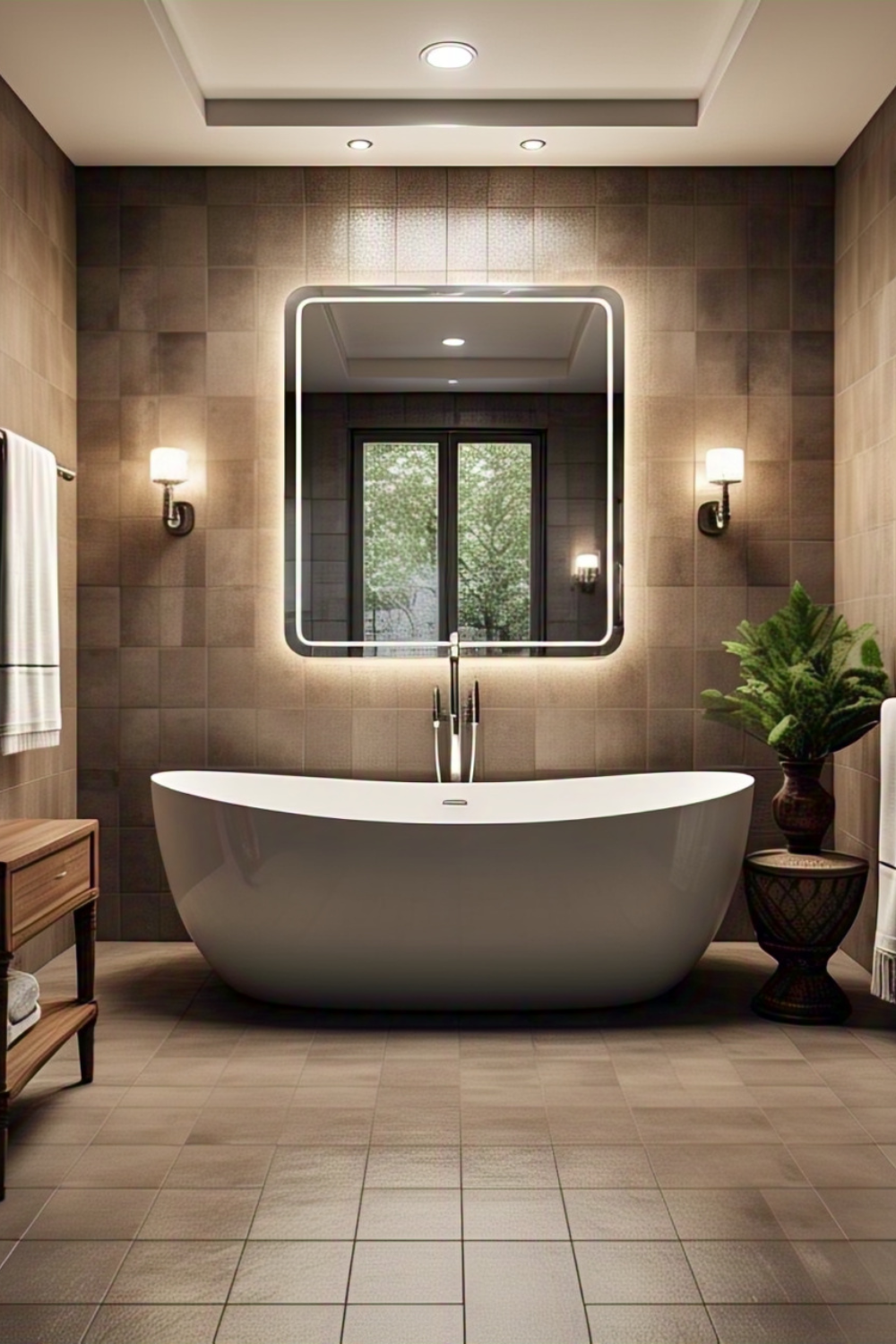Imagine stepping into a space where every detail is designed to soothe your senses, where the boundaries between indoors and outdoors blur, and where the act of bathing transforms into a meditative ritual. This is the essence of traditional Japanese bathroom design—a harmonious blend of simplicity, functionality, and natural beauty that has captivated the world for centuries. Rooted in ancient traditions and inspired by the principles of Zen philosophy, these bathrooms are more than just functional spaces; they are sanctuaries of relaxation, rejuvenation, and mindfulness.
In this blog post, we’ll explore 30 traditional Japanese bathroom designs, delving into their unique features, cultural significance, and the timeless principles that make them so inspiring. From the iconic ofuro soaking tub to the minimalist elegance of shoji screens, each design element tells a story of craftsmanship, respect for nature, and a deep appreciation for the art of living well. Whether you’re a fan of Japanese interior design, looking to incorporate Zen-inspired elements into your home, or simply seeking ideas for a spa-like bathroom retreat, this guide will take you on a journey through the heart of Japanese bathing culture.
Join us as we uncover the secrets of Japanese wet rooms, the allure of natural materials like hinoki cypress and bamboo, and the calming influence of indoor-outdoor connections. Discover how traditional Japanese bathrooms can inspire modern designs, blending ancient wisdom with contemporary innovation to create spaces that are both functional and deeply restorative. Let’s dive into the world of Japanese bathroom aesthetics, where every detail is a reflection of balance, harmony, and timeless elegance.
1. The Ofuro: A Deep Soaking Tub for Ultimate Relaxation
The ofuro, or Japanese soaking tub, is the centerpiece of traditional Japanese bathrooms. Unlike Western bathtubs, the ofuro is deeper and shorter, designed for seated soaking rather than lying down. This design encourages a meditative experience, allowing bathers to fully immerse themselves in warm water. Often made from fragrant woods like hinoki cypress, the ofuro releases a soothing aroma that enhances the bathing experience. The ofuro is not just about cleanliness—it’s a ritual that promotes physical and mental well-being.
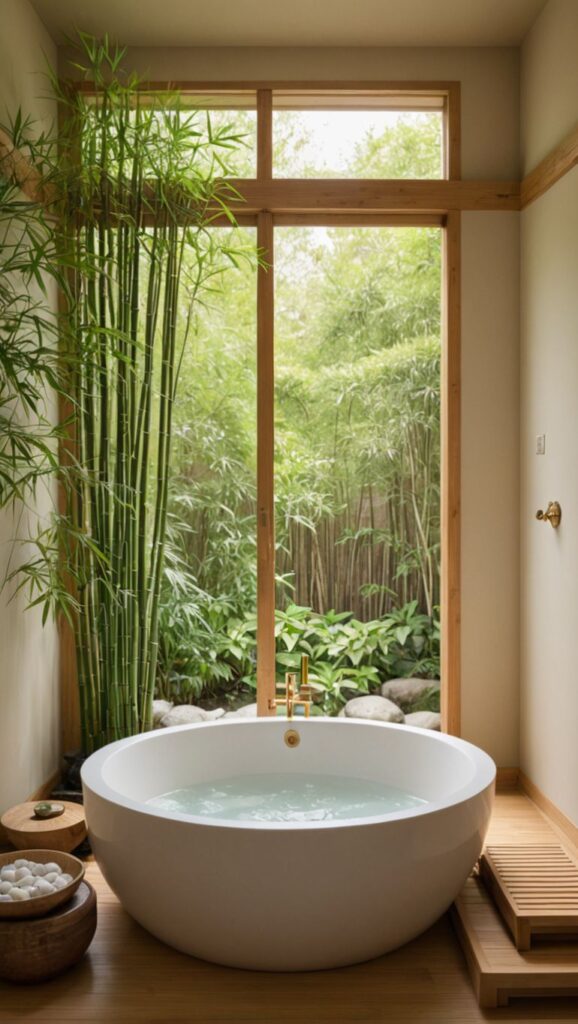
2. Sento: The Communal Bathhouse Experience
Sento, or public bathhouses, are an integral part of Japanese culture. These communal spaces feature large bathing areas separated by gender, where people gather to relax and socialize. Traditional sento designs include tiled walls, wooden benches, and large soaking tubs filled with hot water. The atmosphere is serene, with steam rising and the sound of water creating a calming ambiance. Sento bathrooms are a testament to the Japanese philosophy of shared spaces and communal harmony.

3. Natural Materials: Wood, Stone, and Bamboo
Traditional Japanese bathrooms emphasize the use of natural materials to create a connection with nature. Wood, particularly hinoki cypress, is favored for its durability and aromatic properties. Stone is used for flooring and walls, adding a rustic yet elegant touch. Bamboo, with its lightweight and sustainable qualities, is often incorporated into accessories like mats and baskets. These materials not only enhance the aesthetic appeal but also contribute to a sense of tranquility and balance.
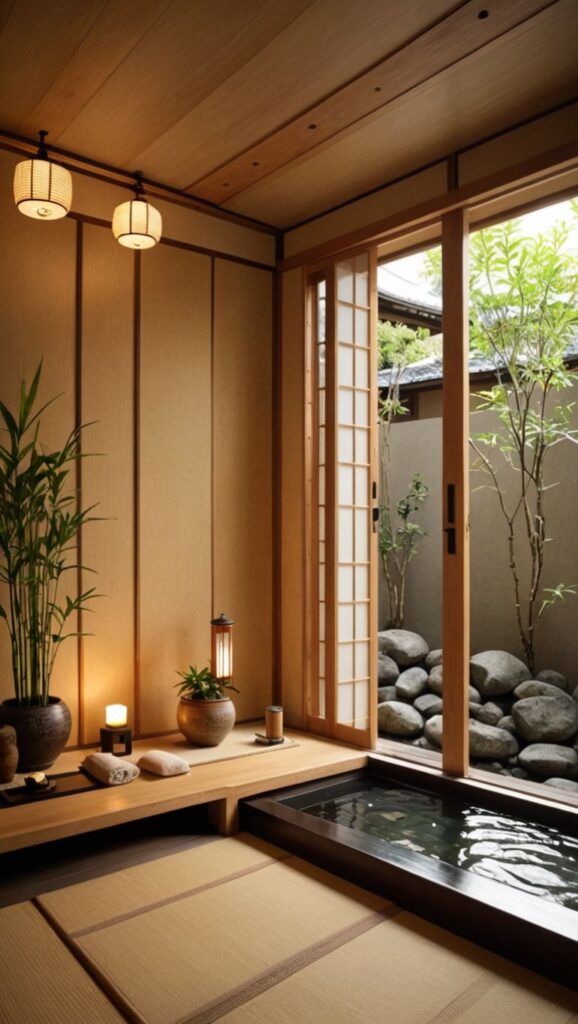
4. Minimalist Aesthetics: Less is More
Japanese bathroom design is rooted in minimalism, focusing on simplicity and functionality. Clutter is avoided, and only essential items are included in the space. This minimalist approach creates a sense of calm and order, allowing the mind to relax. Clean lines, neutral colors, and unadorned surfaces are hallmarks of this style. The absence of excess decoration ensures that the bathroom remains a peaceful retreat.

5. Tatami Mats: Soft and Natural Flooring
Tatami mats, traditionally made from woven straw, are a common feature in Japanese homes, including bathrooms. These mats provide a soft, natural surface underfoot, adding warmth and comfort to the space. Tatami mats are also moisture-resistant, making them suitable for bathroom use. Their earthy texture and subtle scent contribute to the overall sensory experience of a traditional Japanese bathroom.
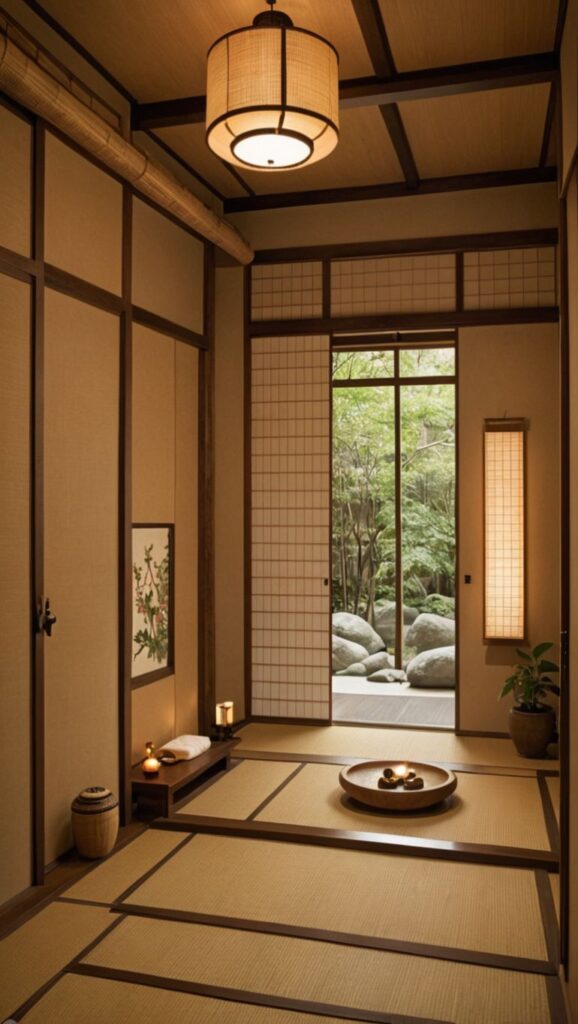
6. Shoji Screens: Translucent Dividers
Shoji screens are sliding panels made from wooden frames and translucent paper. In Japanese bathrooms, they are used to divide spaces while allowing light to filter through. These screens create a sense of privacy without closing off the room entirely. The soft, diffused light they provide enhances the serene atmosphere of the bathroom. Shoji screens are a perfect example of how Japanese design balances openness and seclusion.

7. Indoor-Outdoor Connection: Bringing Nature Inside
Traditional Japanese bathrooms often blur the line between indoors and outdoors. Large windows, skylights, and open layouts allow natural light and fresh air to flow into the space. Some designs even incorporate small gardens or views of the surrounding landscape. This connection to nature fosters a sense of peace and harmony, making the bathroom a true sanctuary.

8. Wet Room Concept: Open and Functional
The wet room is a hallmark of Japanese bathroom design. Instead of separate shower and bathtub areas, the entire bathroom is designed to get wet. The floor is gently sloped to allow water to drain efficiently, and waterproof materials are used throughout. This open layout maximizes space and simplifies cleaning, making the bathroom both functional and aesthetically pleasing.
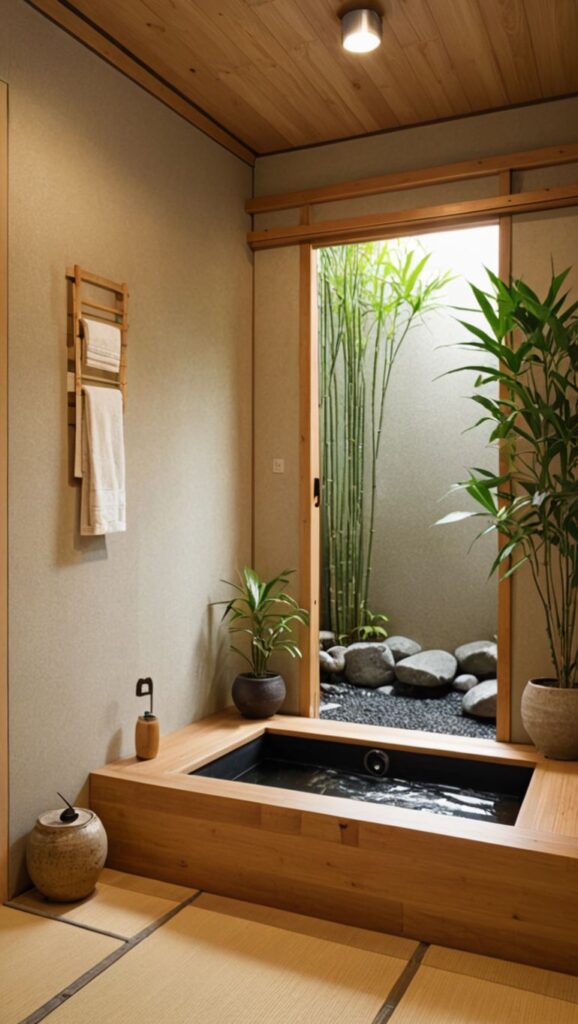
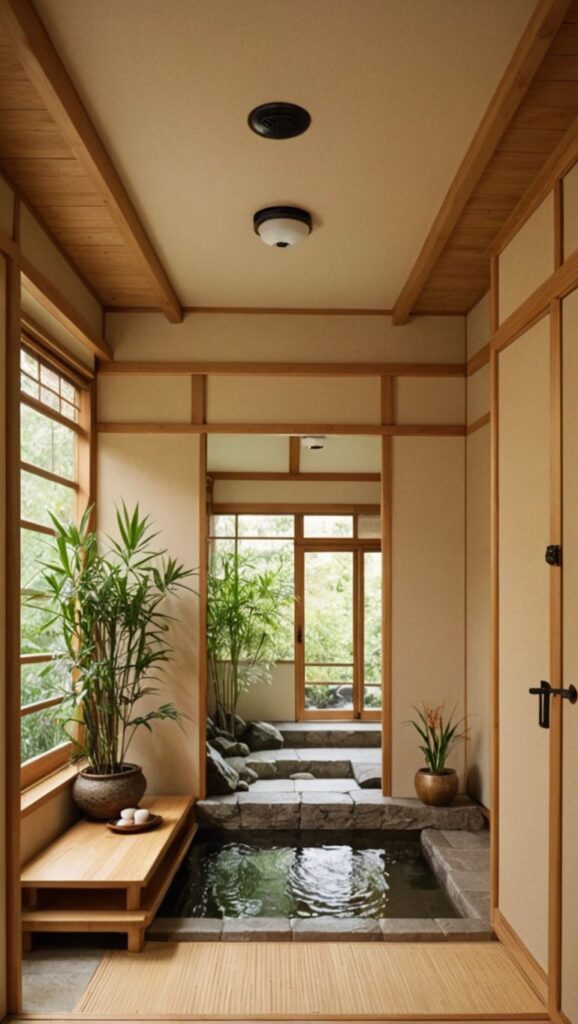
9. Onsen-Inspired Designs: Hot Spring Vibes
Onsen, or natural hot springs, are a beloved part of Japanese culture. Traditional bathrooms often draw inspiration from onsen, incorporating elements like stone tubs, wooden decks, and natural surroundings. The goal is to recreate the therapeutic experience of soaking in a hot spring, even in an urban setting. These designs emphasize relaxation and connection to nature.
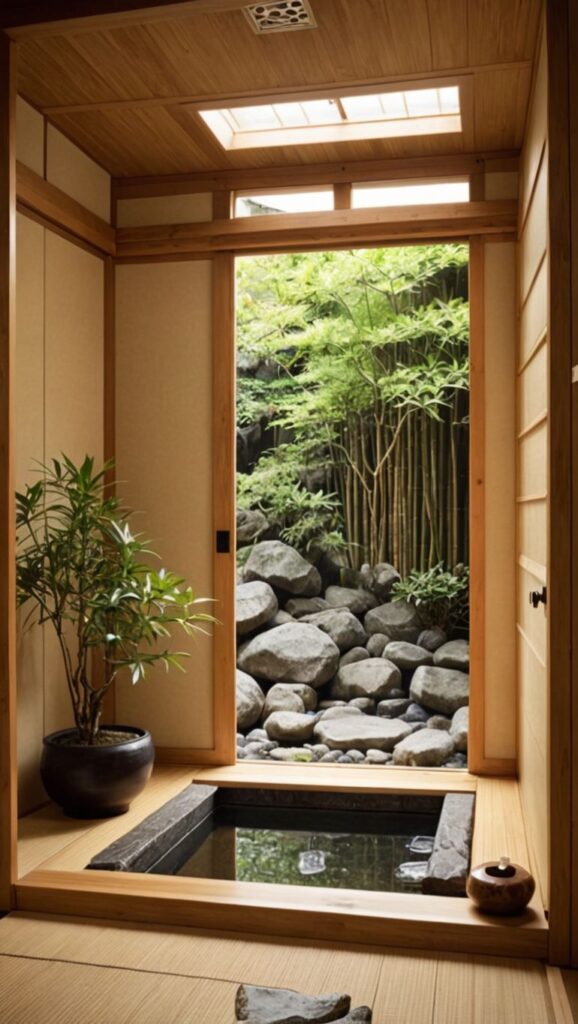
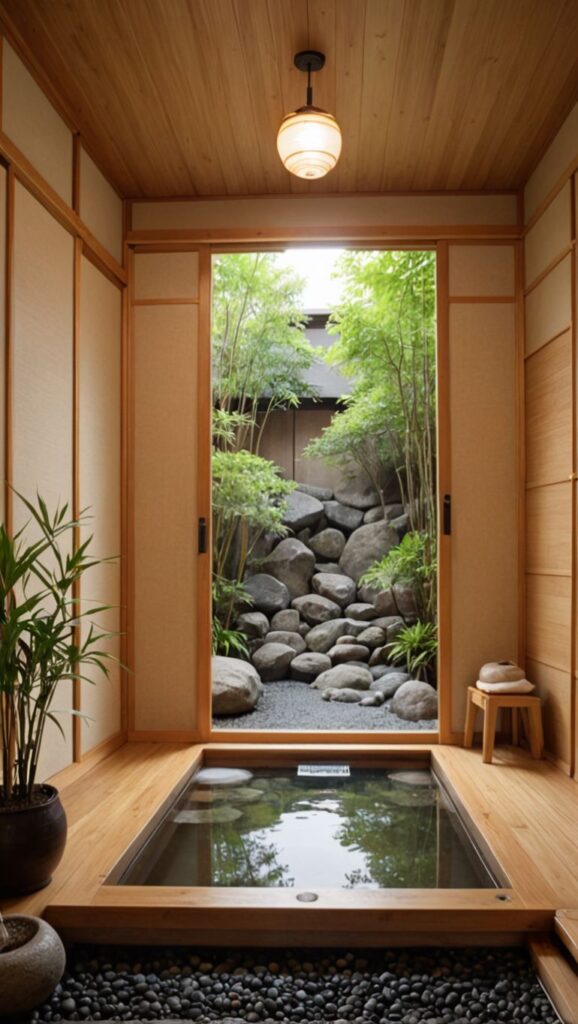
10. Zen Influences: Creating a Meditative Space
Zen philosophy plays a significant role in Japanese bathroom design. The focus is on creating a space that encourages mindfulness and inner peace. Simple, uncluttered layouts, natural materials, and subtle lighting all contribute to a Zen-like atmosphere. The bathroom becomes a place to escape the stresses of daily life and focus on the present moment.

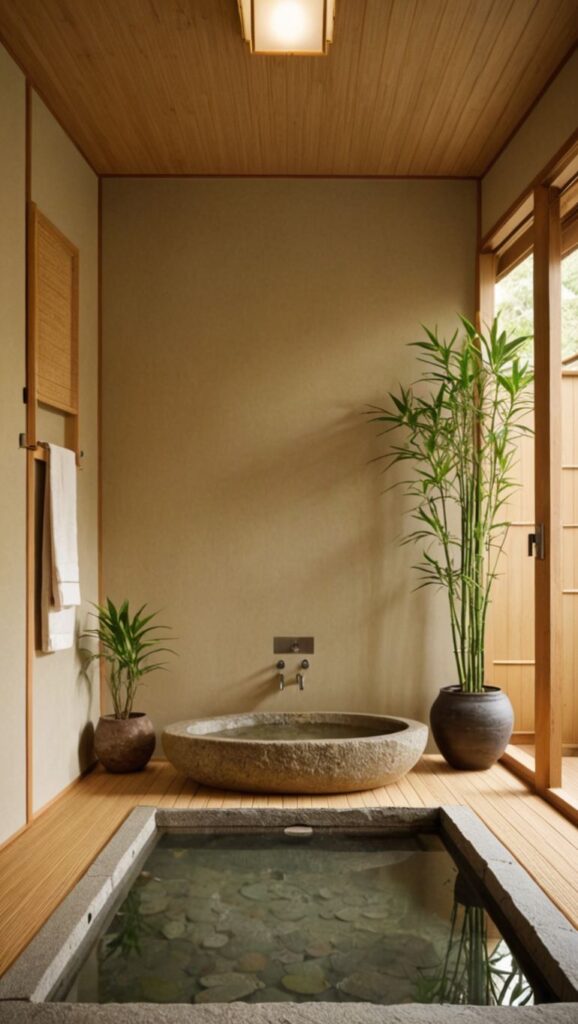
11. Traditional Wash Basins: Functional and Elegant
Japanese wash basins, or tsukubai, are often found in traditional bathrooms. These low, stone basins are used for washing hands and face before entering the ofuro. Their simple, elegant design reflects the Japanese appreciation for understated beauty. The act of using the tsukubai is also symbolic, representing purification and preparation for the bathing ritual.
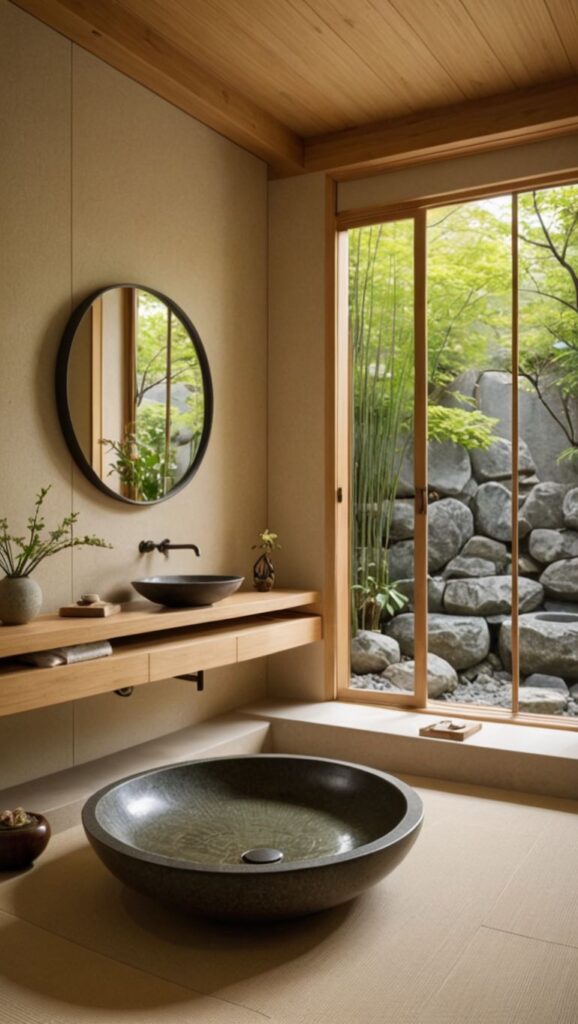
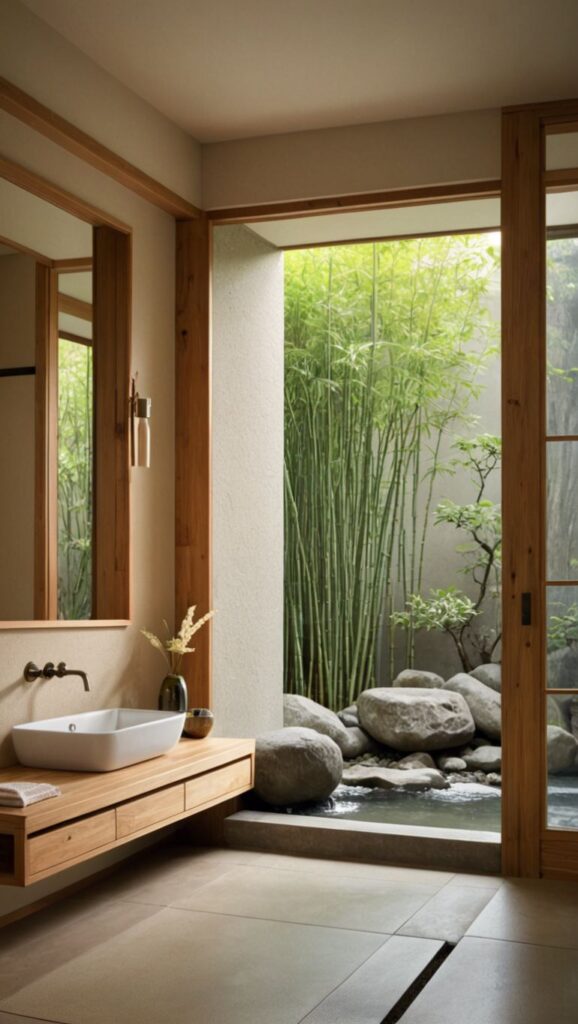
12. Furoshiki: Versatile and Eco-Friendly Accessories
Furoshiki are traditional Japanese cloths used for wrapping and carrying items. In the bathroom, they serve as eco-friendly alternatives to towels and mats. Made from soft, absorbent fabrics, furoshiki add a touch of tradition and practicality to the space. Their versatility and sustainability align perfectly with the principles of Japanese design.

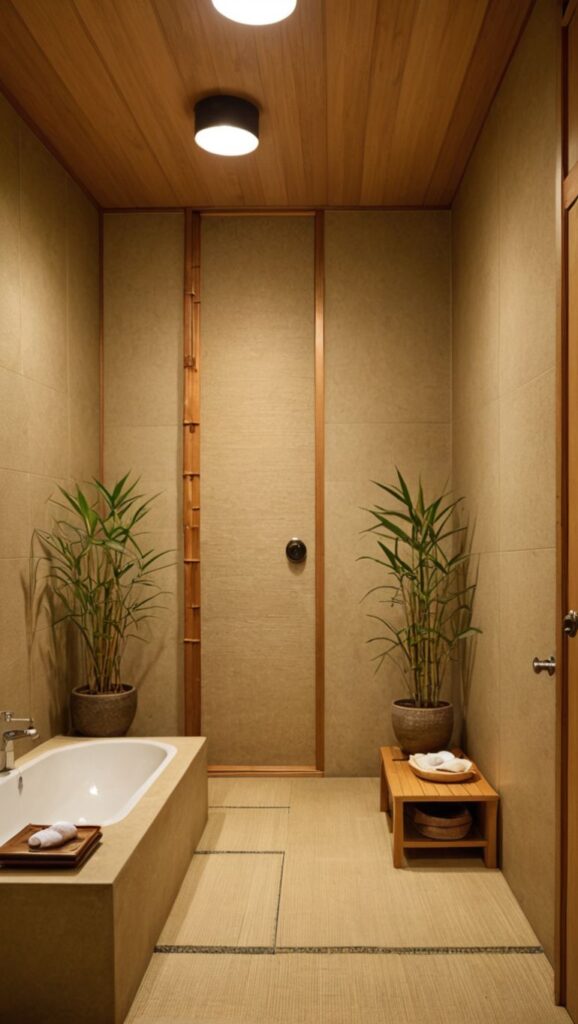
13. Natural Lighting: Enhancing the Ambiance
Natural light is a key element in traditional Japanese bathrooms. Large windows, skylights, and strategically placed openings allow sunlight to fill the space. This not only reduces the need for artificial lighting but also creates a warm, inviting atmosphere. The interplay of light and shadow adds depth and texture to the bathroom, enhancing its visual appeal.
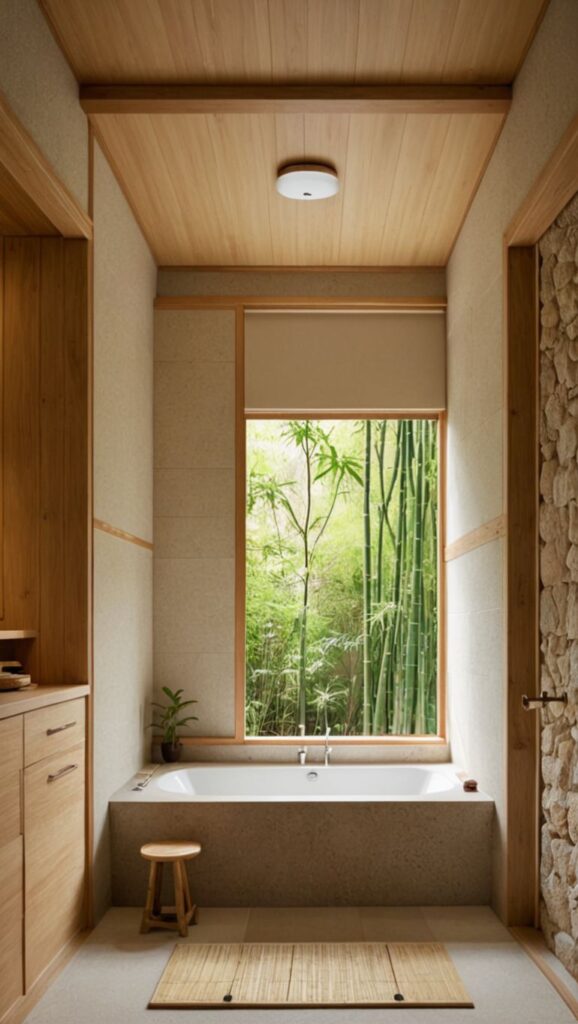

14. Water Features: The Sound of Serenity
Water features, such as small fountains or cascading streams, are often incorporated into Japanese bathrooms. The gentle sound of flowing water creates a calming ambiance, masking outside noise and promoting relaxation. These features also symbolize purity and renewal, aligning with the spiritual aspects of Japanese bathing culture.
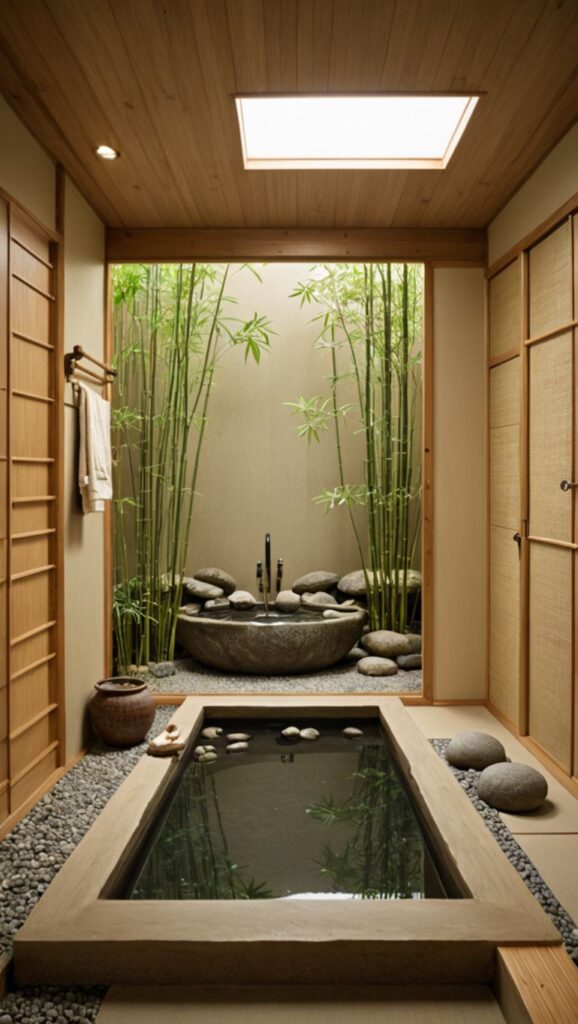
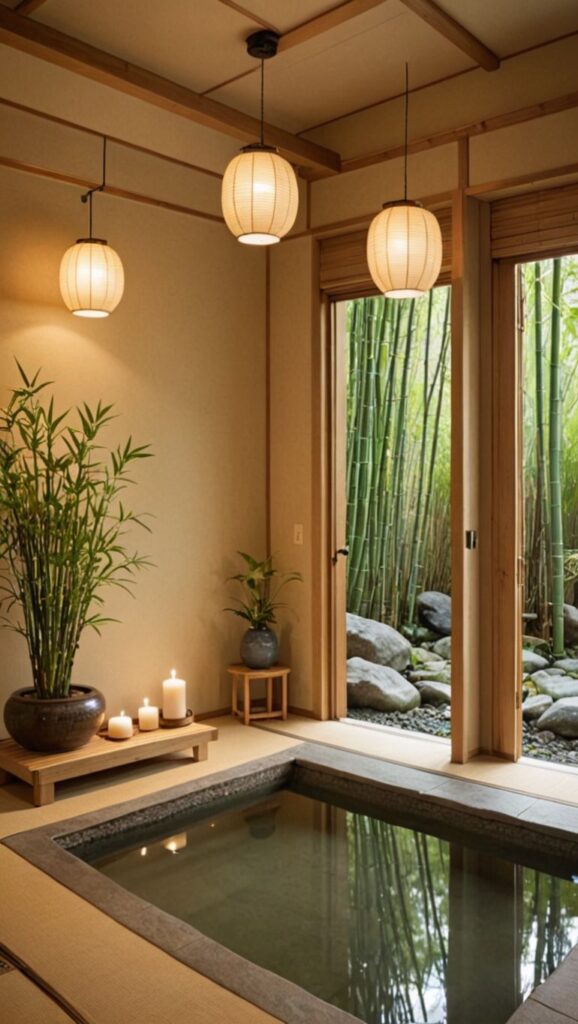
15. Traditional Bathroom Accessories: Practical and Decorative
Japanese bathrooms are adorned with a variety of traditional accessories, such as wooden stools, buckets, and ladles. These items are both practical and decorative, adding to the overall aesthetic of the space. Their simple, handcrafted designs reflect the Japanese appreciation for craftsmanship and functionality.
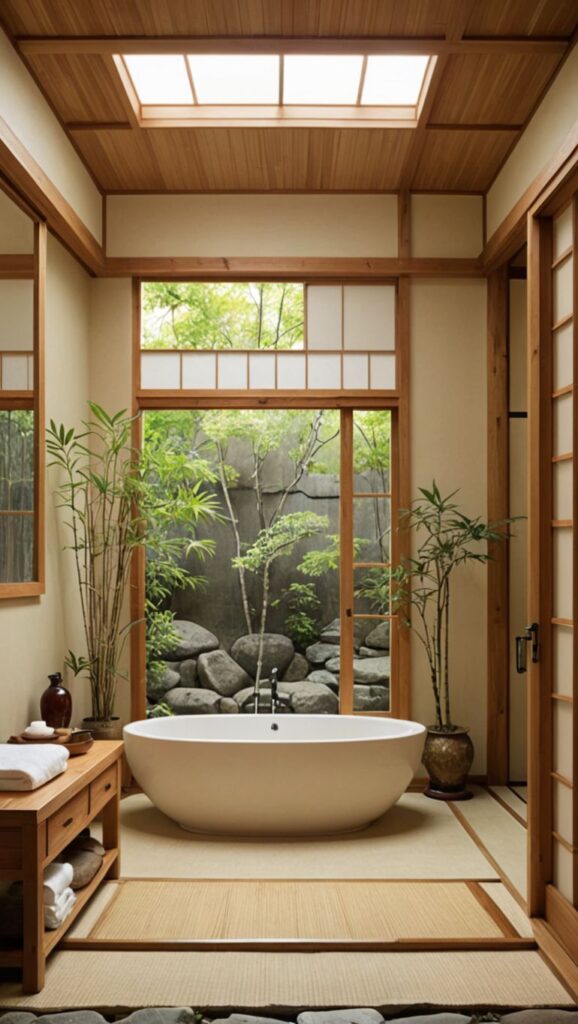
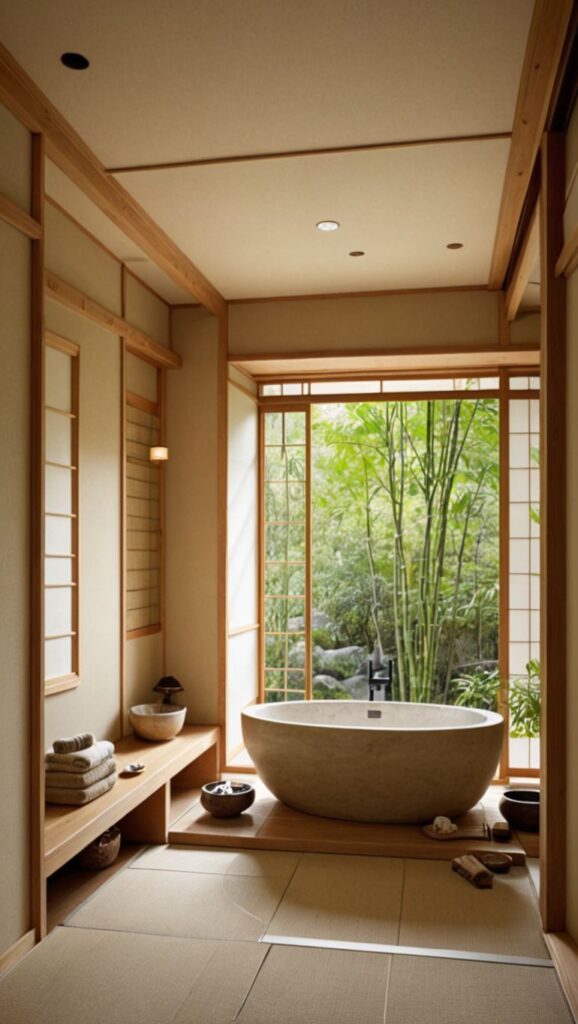
16. Herbal Baths: Aromatherapy for the Senses
Herbal baths, or yuzu-yu, are a traditional Japanese practice that involves adding herbs, flowers, or citrus fruits to the bathwater. This not only enhances the sensory experience but also provides therapeutic benefits. The fragrant steam and soothing properties of the herbs promote relaxation and rejuvenation, making the bath a truly holistic experience.
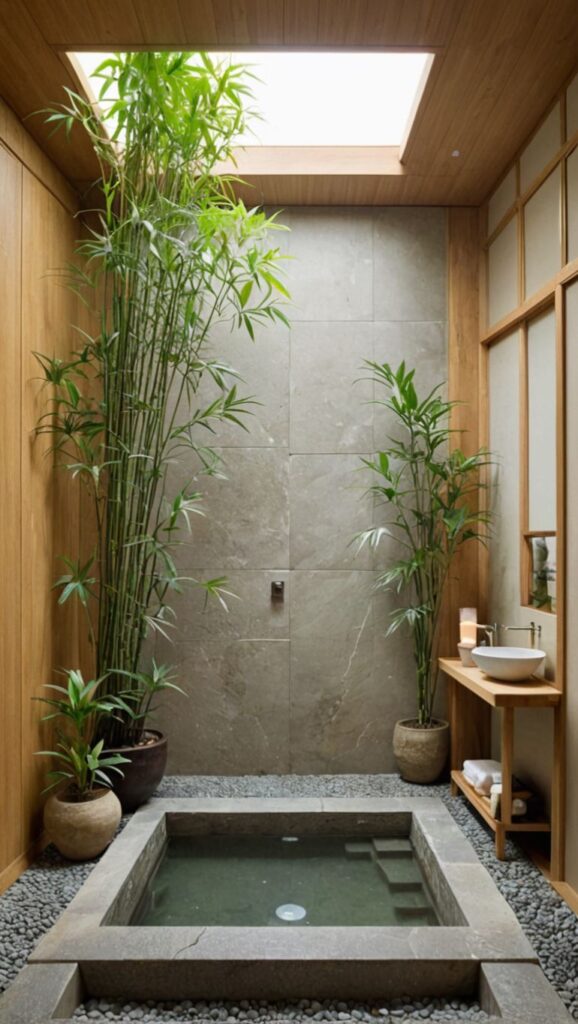

17. Traditional Japanese Toilets: Clean and Efficient
Japanese toilets, or washiki toire, are known for their cleanliness and efficiency. Traditional designs include squat toilets, which are still used in some households and public spaces. These toilets are simple, easy to clean, and environmentally friendly. Modern Japanese toilets, with features like bidets and heated seats, are an evolution of this traditional design.
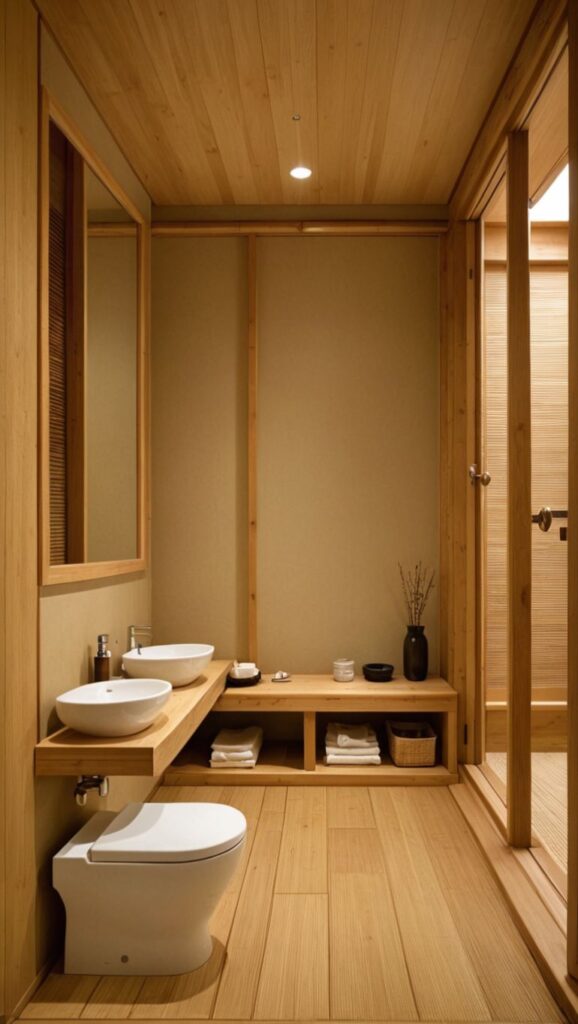
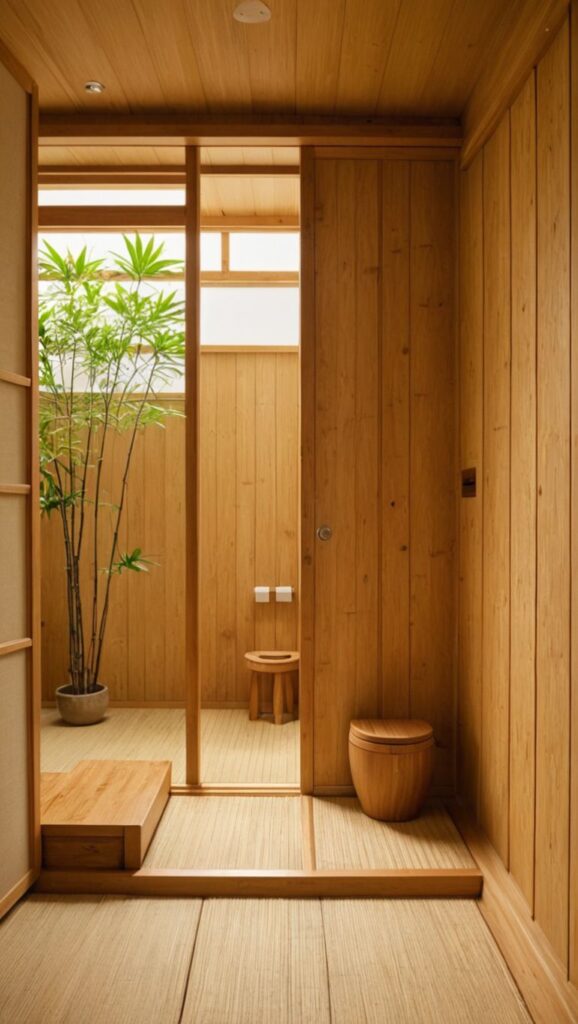
18. Bathroom Rituals: A Cultural Tradition
Bathing in Japan is more than just a daily routine—it’s a cultural ritual. The process involves washing and rinsing before entering the ofuro, ensuring that the bathwater remains clean. This ritual emphasizes respect for oneself and others, as well as an appreciation for the act of bathing. Traditional Japanese bathrooms are designed to facilitate this ritual, creating a space that is both functional and meaningful.
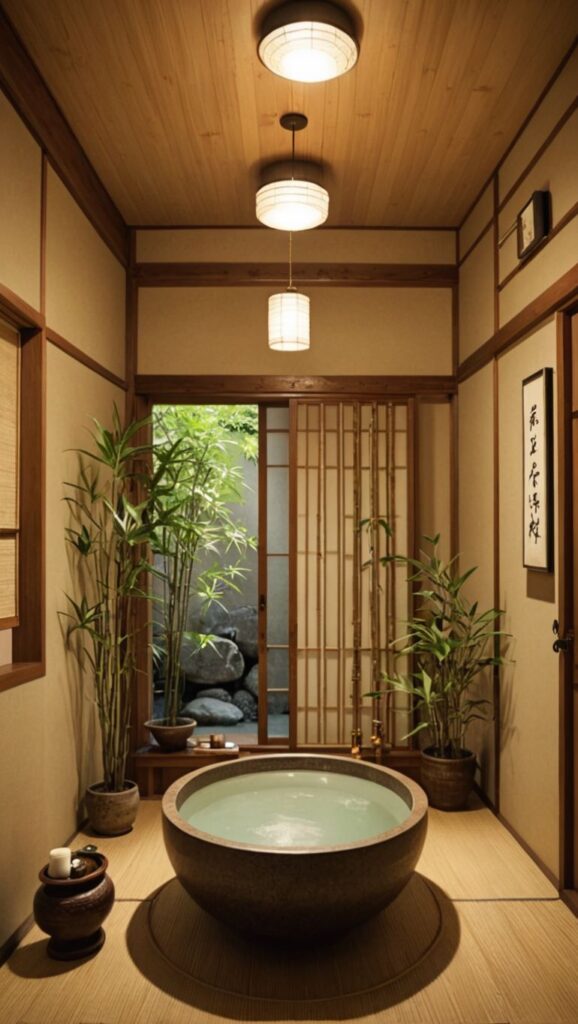
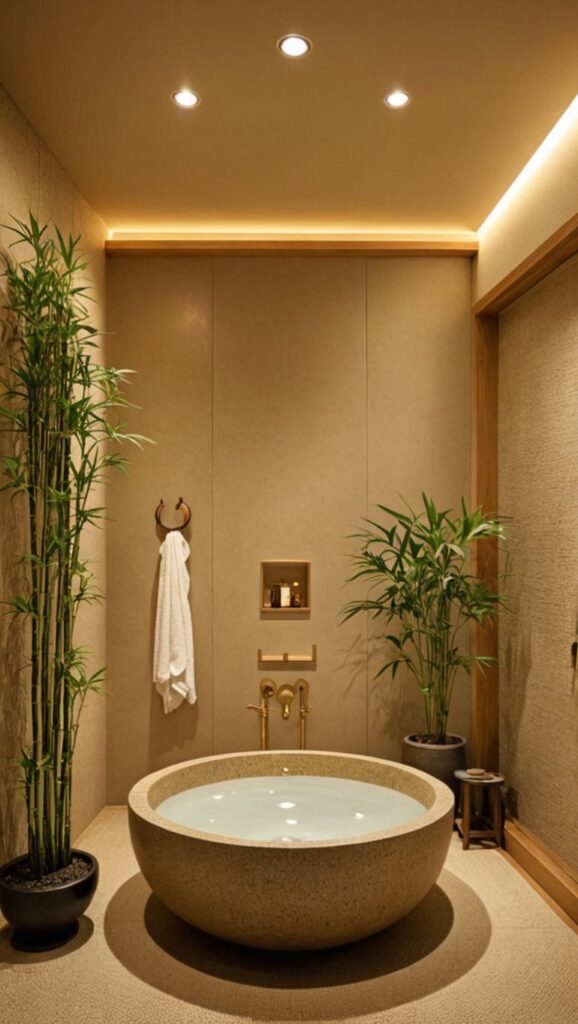
19. Seasonal Decor: Adapting to the Changing Seasons
Japanese bathrooms often incorporate seasonal decor to reflect the changing seasons. In spring, cherry blossom motifs may adorn the walls, while autumn brings warm, earthy tones. This practice, known as kacho-fugetsu, connects the bathroom to the natural world and enhances its aesthetic appeal. Seasonal decor adds a dynamic element to the space, making it feel alive and ever-changing.

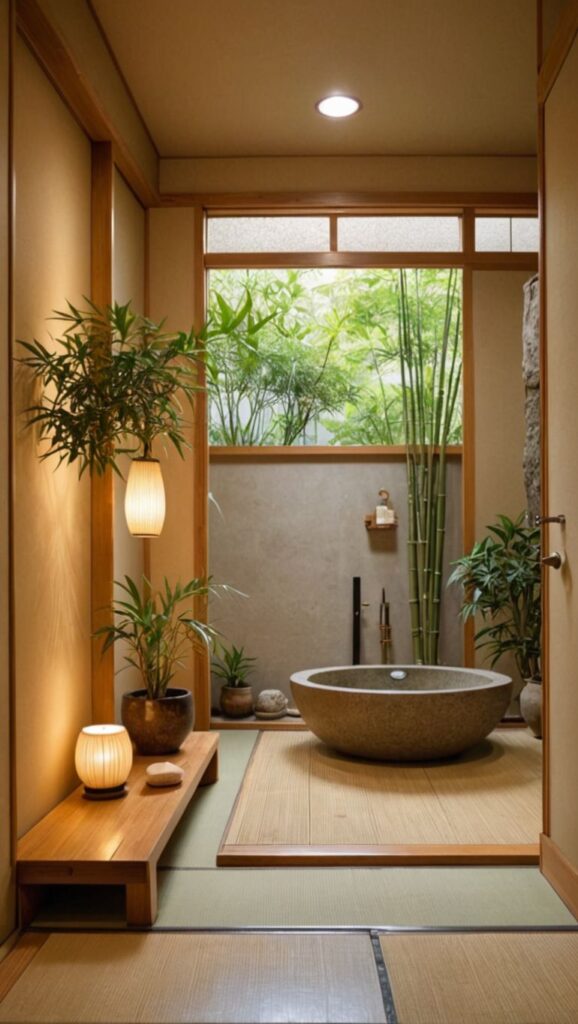
20. Traditional Japanese Colors: Subtle and Harmonious
The color palette of traditional Japanese bathrooms is inspired by nature, with shades of brown, beige, green, and gray dominating the space. These subtle, harmonious colors create a calming atmosphere and complement the natural materials used in the design. Bright or bold colors are avoided, as they can disrupt the sense of tranquility.

21. Wooden Buckets and Ladles: Simple and Functional
Wooden buckets and ladles are essential accessories in traditional Japanese bathrooms. Used for rinsing and pouring water, these items are both practical and decorative. Their simple, handcrafted designs reflect the Japanese appreciation for functionality and beauty. The use of wood also adds warmth and texture to the space.

22. Traditional Japanese Lighting: Soft and Diffused
Lighting in traditional Japanese bathrooms is soft and diffused, creating a warm, inviting atmosphere. Paper lanterns, pendant lights, and wall sconces are commonly used to provide gentle illumination. The goal is to mimic natural light and create a sense of calm. Harsh or bright lighting is avoided, as it can disrupt the serene ambiance.

23. Bathroom Layouts: Efficient and Thoughtful
The layout of a traditional Japanese bathroom is designed for efficiency and ease of use. The wet room concept allows for seamless movement between the shower and bathtub areas. Storage is integrated into the design, keeping the space clutter-free. Every element is thoughtfully placed to enhance functionality and create a harmonious flow.
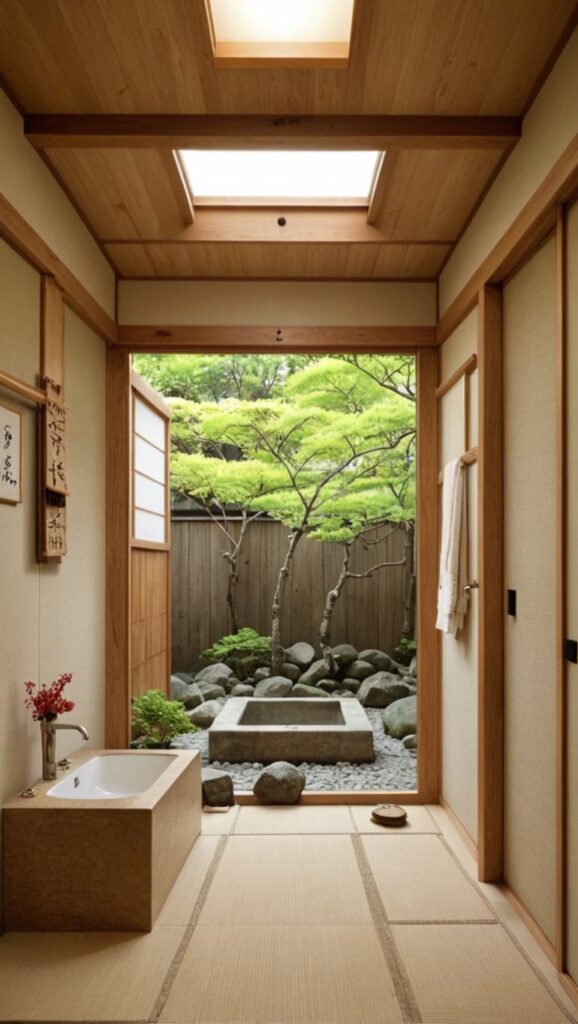
24. Traditional Japanese Art: Adding Cultural Flair
Japanese bathrooms often feature traditional art, such as calligraphy, paintings, or ceramics. These pieces add cultural flair and personal expression to the space. The art is carefully chosen to complement the overall design and create a sense of continuity with the rest of the home. It serves as a reminder of the rich cultural heritage behind Japanese bathroom design.

25. 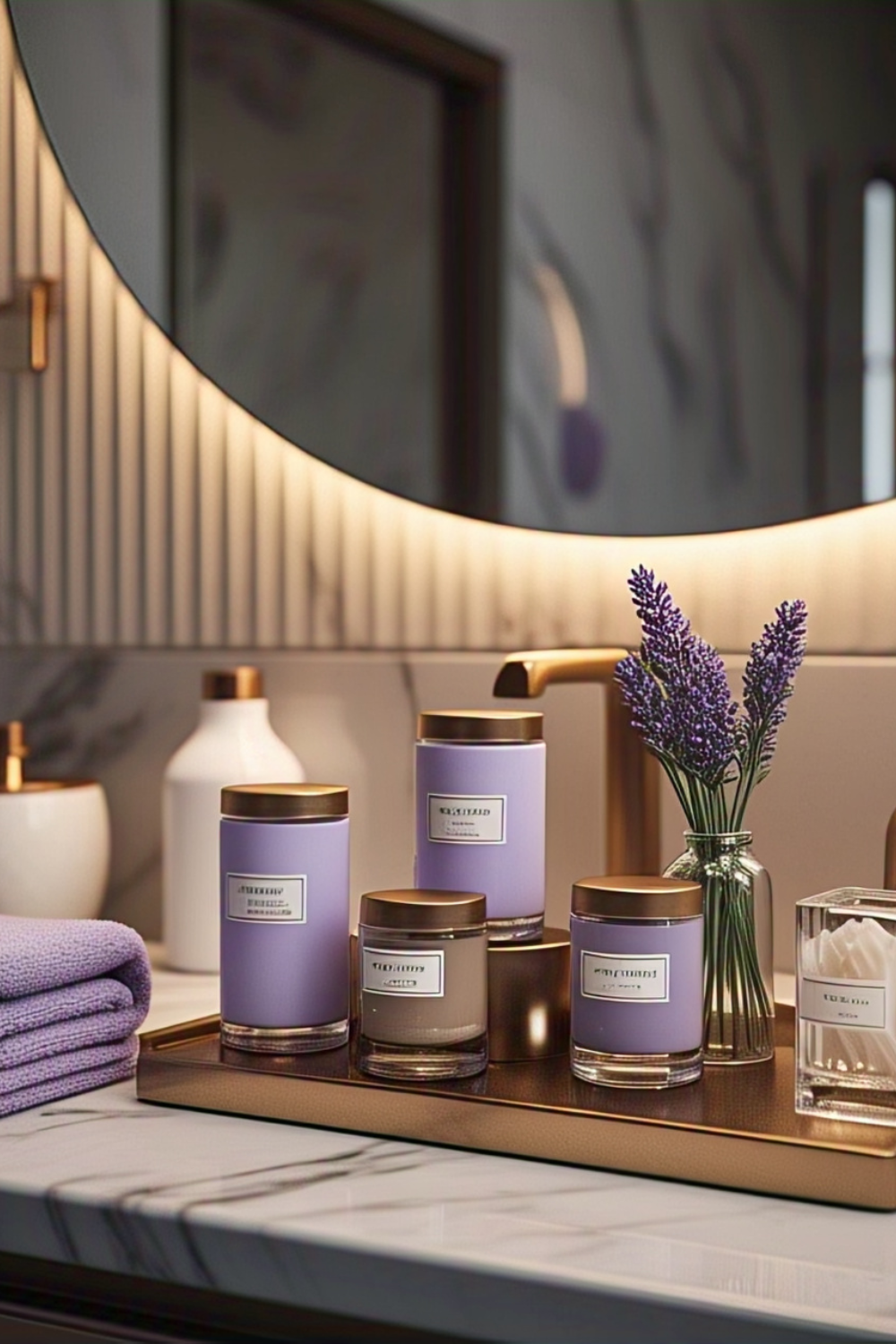
Scents play an important role in traditional Japanese bathrooms. Aromatic woods, herbs, and essential oils are used to create a calming atmosphere. The natural fragrance of hinoki cypress is particularly popular, as it promotes relaxation and reduces stress. These scents enhance the sensory experience of bathing, making it a truly immersive ritual.
26. Traditional Japanese Textiles: Soft and Absorbent
Japanese textiles, such as cotton and linen, are commonly used in bathrooms for towels, mats, and curtains. These materials are soft, absorbent, and durable, making them ideal for bathroom use. Their natural textures and neutral colors complement the minimalist aesthetic of traditional Japanese design. Textiles add warmth and comfort to the space, enhancing its overall appeal.

27. Bathroom Plants: Bringing Life to the Space
Plants are often incorporated into traditional Japanese bathrooms to bring life and freshness to the space. Small potted plants, such as ferns or bonsai, add a touch of greenery and connect the bathroom to nature. Plants also improve air quality and create a sense of vitality. Their presence enhances the overall ambiance, making the bathroom a more inviting and relaxing space.

28. Traditional Japanese Storage: Hidden and Organized
Storage in traditional Japanese bathrooms is designed to be hidden and organized. Built-in cabinets, shelves, and baskets keep toiletries and accessories out of sight, maintaining the minimalist aesthetic. The use of natural materials, such as wood and bamboo, ensures that storage solutions blend seamlessly with the overall design. This approach keeps the bathroom clutter-free and visually appealing.

29. Bathroom Sounds: Creating a Calming Atmosphere
Sound is an important element in traditional Japanese bathrooms. The gentle trickle of water, the rustle of bamboo, or the soft chime of a wind bell can create a calming atmosphere. These sounds mask outside noise and promote relaxation. The careful selection of sound elements enhances the sensory experience of the bathroom, making it a true sanctuary.

30. Modern Adaptations: Blending Tradition with Innovation
While traditional Japanese bathroom designs remain popular, modern adaptations are also gaining traction. These designs blend traditional elements with contemporary features, such as high-tech toilets, LED lighting, and sleek fixtures. The result is a space that honors Japanese heritage while meeting the needs of modern life. This fusion of old and new ensures that Japanese bathroom design remains relevant and inspiring.
